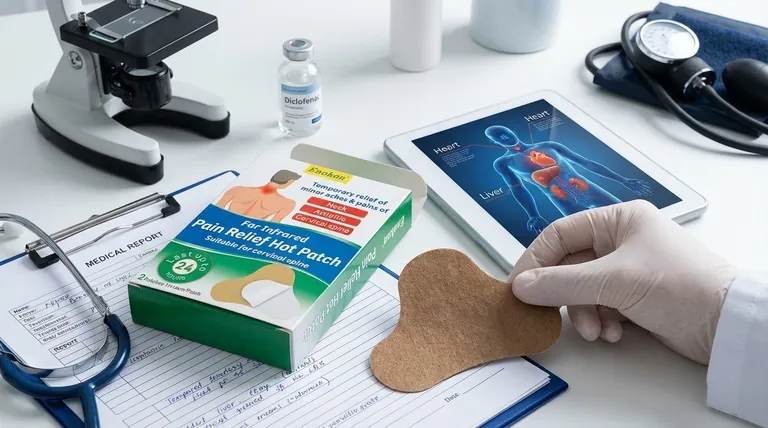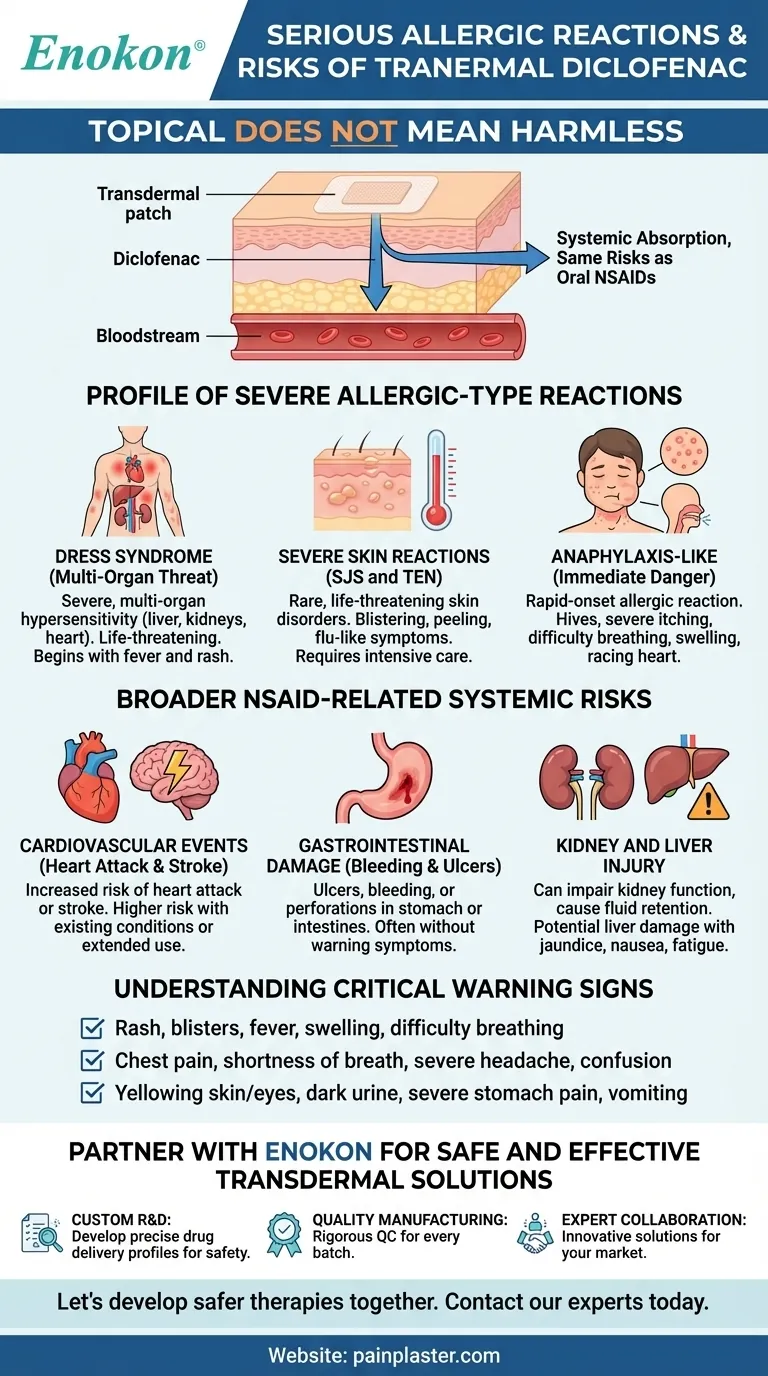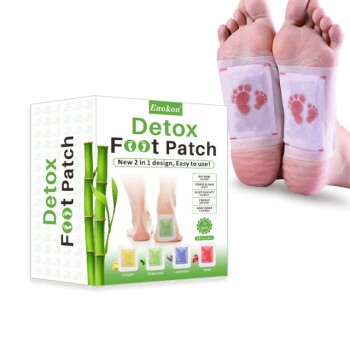One of the most serious allergic reactions transdermal diclofenac can cause is Drug Reaction with Eosinophilia and Systemic Symptoms, known as DRESS syndrome. This is a severe, multi-organ hypersensitivity reaction that can affect the liver, kidneys, and heart, and can be life-threatening. Other critical reactions include severe skin conditions like Stevens-Johnson syndrome (SJS) and toxic epidermal necrolysis (TEN), which cause blistering and peeling of the skin.
While transdermal diclofenac is applied to the skin for localized relief, it is absorbed into the bloodstream and carries the same risks as oral NSAIDs. Understanding that "topical" does not mean "harmless" is crucial for recognizing the warning signs of rare but potentially fatal systemic reactions.

Differentiating Allergic Reactions from Other Systemic Risks
Diclofenac is a nonsteroidal anti-inflammatory drug (NSAID). While your primary question is about allergic reactions, it's essential to understand the full spectrum of serious risks associated with this class of medication.
These risks fall into two main categories: hypersensitivity/allergic reactions, where the immune system overreacts, and other systemic side effects that can damage organs and bodily systems over time or with acute exposure.
Profile of Severe Allergic-Type Reactions
These reactions are caused by a severe, improper immune response to the medication and require immediate medical intervention.
DRESS Syndrome (Multi-Organ Threat)
DRESS is a widespread and severe drug reaction. It typically begins with a fever and rash but quickly progresses to involve internal organs.
This condition can lead to inflammation of the liver (hepatitis), kidneys (nephritis), and heart (myocarditis), making it a medical emergency.
Severe Skin Reactions (SJS and TEN)
Stevens-Johnson syndrome (SJS) and toxic epidermal necrolysis (TEN) are rare but life-threatening skin disorders.
They are characterized by fever and flu-like symptoms, followed by a painful rash that spreads and blisters. This leads to the top layer of skin dying and shedding, requiring intensive care, often in a burn unit.
Anaphylaxis-like Symptoms (Immediate Danger)
Some individuals may experience a rapid-onset allergic reaction with symptoms that demand immediate emergency care.
These signs include hives, severe itching, difficulty breathing or wheezing, swelling of the face, lips, tongue, or throat, and a racing heart.
Broader NSAID-Related Systemic Risks
Beyond specific allergic reactions, transdermal diclofenac carries other serious risks inherent to all NSAIDs. These events can occur without any prior warning.
Cardiovascular Events (Heart Attack and Stroke)
The use of NSAIDs, including transdermal diclofenac, increases the risk of heart attack or stroke.
This risk may be higher for individuals with existing heart conditions or those using the medication for an extended period. These events can be fatal.
Gastrointestinal Damage (Bleeding and Ulcers)
NSAIDs can cause ulcers, bleeding, or perforations (holes) in the stomach or intestines.
These conditions can occur suddenly and without warning symptoms. The risk is elevated in older adults, those in poor health, and individuals who smoke or consume alcohol.
Kidney and Liver Injury
Diclofenac can impair kidney function, leading to fluid retention, increased blood pressure, and in severe cases, kidney failure.
It can also cause liver damage, with warning signs like nausea, fatigue, and yellowing of the skin or eyes (jaundice).
Understanding the Critical Warning Signs
Recognizing early symptoms is the most important step in preventing a severe outcome. If you experience any of the following, stop using the medication and seek immediate medical attention.
Signs of a Systemic Allergic Reaction
- Rash, blisters, or hives
- Fever or flu-like symptoms
- Swelling of the face, throat, limbs, or lymph nodes
- Difficulty breathing, wheezing, or worsening asthma
- Extreme tiredness or pale skin
Signs of Cardiovascular or Neurological Events
- Chest pain
- Shortness of breath
- Severe headache or stiff neck
- Confusion or weakness on one side of the body
- Irregular or fast heartbeat
Signs of Organ or GI Distress
- Yellowing of the skin or eyes (jaundice)
- Dark urine or unusual bleeding/bruising
- Severe upper stomach pain or nausea
- Unexplained weight gain or swelling in the abdomen
- Vomiting or signs of stomach bleeding
Making the Right Choice for Your Health
Proactive communication with your healthcare provider and vigilant self-monitoring are your best tools for safety.
- If you are considering this medication: Disclose your entire medical history to your doctor, especially any past issues with your heart, kidneys, stomach, or a known sensitivity to aspirin or other NSAIDs.
- If you are currently using this medication: Pay close attention to any new or unusual symptoms, no matter how minor they seem, and report them to your doctor without delay.
- If you have a history of asthma or NSAID sensitivity: You are in a higher-risk category for a severe reaction and must use this medication with extreme caution and under close medical supervision.
Being informed about these potential risks is the most critical step in using this medication safely and effectively.
Summary Table:
| Reaction Type | Key Examples | Primary Concern |
|---|---|---|
| Severe Allergic | DRESS Syndrome, SJS/TEN, Anaphylaxis | Multi-organ failure, life-threatening skin peeling, respiratory distress |
| Systemic NSAID Risks | Heart Attack, Stroke, GI Bleeding, Kidney/Liver Damage | Increased cardiovascular events, internal bleeding, organ failure |
| Critical Warning Signs | Rash with fever, facial swelling, chest pain, jaundice | Require immediate medical attention; stop medication |
Partner with Enokon for Safe and Effective Transdermal Solutions
As a bulk manufacturer of reliable transdermal patches and pain plasters, Enokon understands that patient safety is paramount. Our technical expertise ensures high-quality, consistent products for healthcare and pharma distributors and brands.
We help you mitigate risks and deliver value:
- Custom R&D: Develop patches with precise drug delivery profiles to optimize efficacy and safety.
- Quality Manufacturing: Benefit from our rigorous quality control processes for every batch.
- Expert Collaboration: Leverage our experience to create innovative solutions tailored to your market's needs.
Let's develop safer transdermal therapies together. Contact our experts today to discuss your project.
Visual Guide

Related Products
- Far Infrared Deep Heat Relief Patches Medicated Pain Relief Patches
- Heating Pain Relief Patches for Menstrual Cramps
- Far Infrared Heat Pain Relief Patches Transdermal Patches
- Asthma Cough and Pain Relief Patch for Adults and Kids
- Menthol Gel Pain Relief Patch
People Also Ask
- How do pain relief patches compare to other pain relief methods? Discover Targeted, Long-Lasting Relief
- How should pain relief patches be applied and used? A Guide to Safe & Effective Targeted Relief
- How does the Deep Heat Back Patch work? A Drug-Free Solution for Targeted Pain Relief
- How often should pain relief patches be used? Get the Right Schedule for Targeted Relief
- What are pain relief patches and how are they used? A Guide to Safe, Targeted Relief

















